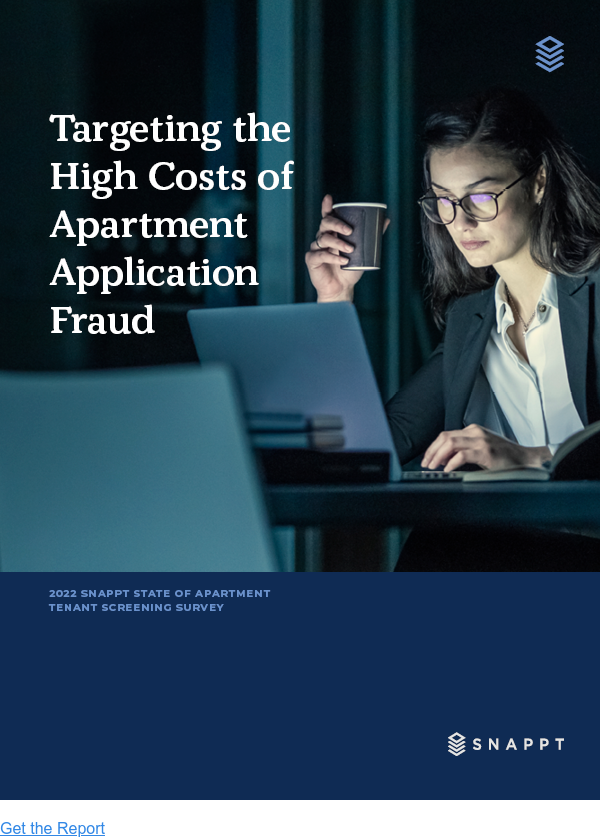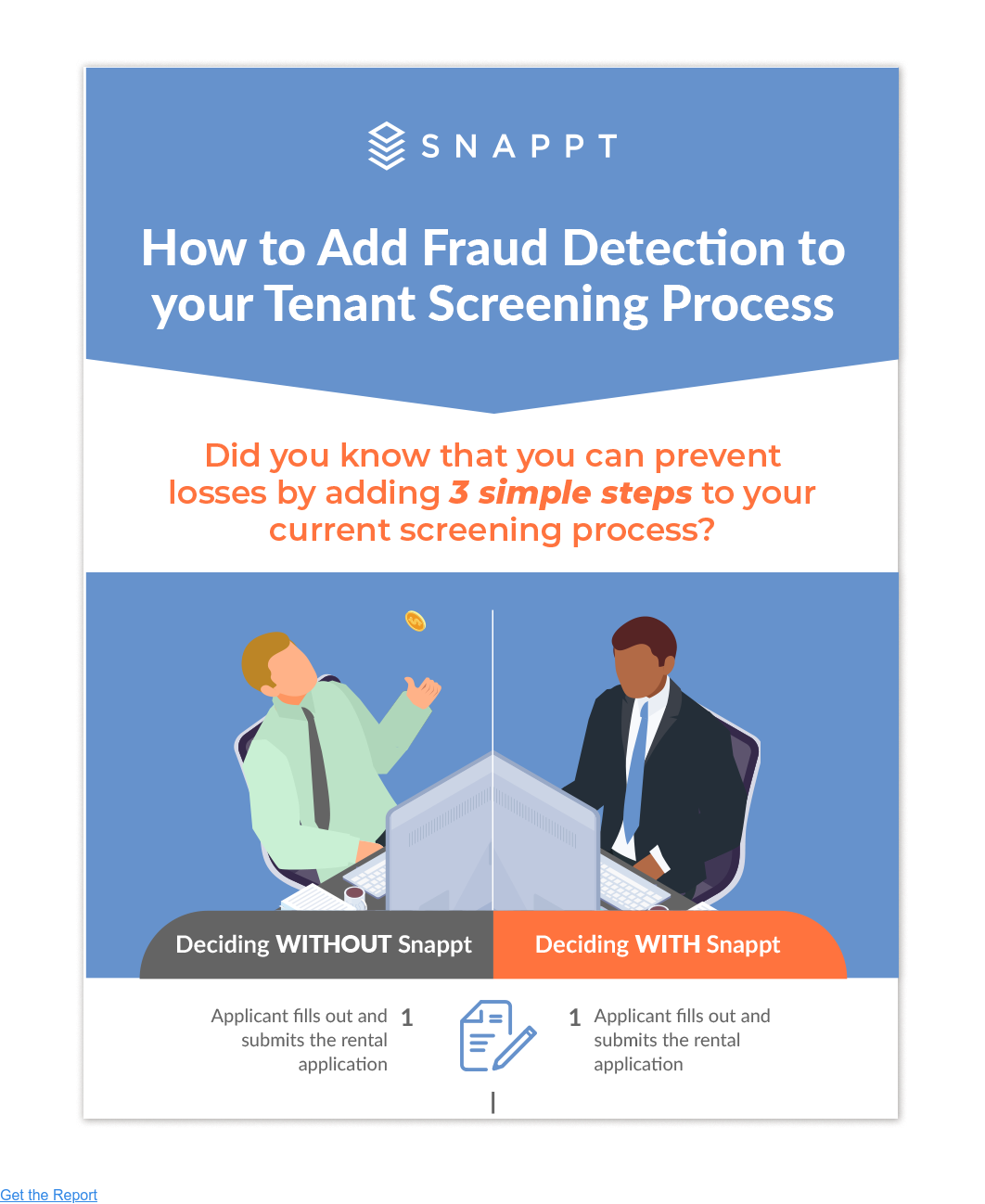Application fraud continues to be a significant challenge for financial institutions, but did you know that it is also prevalent in the multifamily housing and rental markets? Across the U.S., digitally-enabled application fraud continues to grow, and it is increasingly difficult for property managers to determine who they are dealing with.
While the housing industry is experiencing a significant rise in fraud, current tenant screening methods have not been able to keep up. There is growing concern among property management companies about fraudulent applications, particularly those filed online. Many property managers are vulnerable and scrambling to react to continually evolving fraudsters.
What exactly is tenant application fraud?
The majority of property managers don't distinguish between applicant screening and fraud mitigation, yet understanding the difference is key to getting the right renters and reducing involuntary turnover cost.
There are a few common types of fraud that take place during the rental application process. The first type is synthetic ID fraud, which is the fastest-growing form of fraud today. Synthetic ID fraud is when applicants combine real and fake information to create an identity. This type of fraud is more sophisticated as Social Security numbers can be tricky for fraud offenders long-term because they are a government-issued entity and harder to falsify. But that's not the only type of fraud property managers must combat.
Fake pay stubs can be easier to get away with. Searching online for "Fake Pay stubs" is disconcerting. Several websites will promise fake stubs within minutes. In this scenario, applicants will alter or falsify pay stubs to verify employment or make it look like they make enough money to qualify. Some use the pay stubs from their actual jobs but change the numbers to look higher. If these applicants succeed, delinquent payments should be expected because they don't generate the income reported.
As applicants continue to find ways to falsify SSNs, identification, and pay stub data, property managers need to find ways to identify this type of fraud before it's too late.
Why is application fraud on the rise, and why does it affect the tenant screening process?
The COVID-19 pandemic has forced millions to socially distance and stay at home. Now that many transactions have migrated online, fraudsters are taking advantage, and companies must adapt.
Affordable technology, including high-quality digital cameras, scanners, and digital imaging software, makes it easy for even a novice to commit application fraud. Altering and generating falsified documentation was once a complicated task but now can be easily accomplished from the comfort of home.
Finally, more rental applications are taking place through digital devices and online, providing the access and anonymity fraudsters need to fabricate identities and otherwise commit application fraud. Since tenant fraud often starts with a falsified application, it makes sense to have robust tools to monitor applications from that point onward.
Learn more in our Confronting the Costs of Tenant Fraud report, which delves into how property managers are combating application fraud and how that will evolve moving forward.
What is the financial impact of tenant application fraud?
Fraud has expensive and long-lasting consequences. Most property managers believe that over half of negative renter outcomes (evictions, etc.) are tied to some form of fraud. Property owners and management companies can suffer sobering ramifications due to this fraud: reputational damage, increased evictions, and the operational expenses entailed with spending more time on applications.
Identifying application fraud has a notable and positive impact on preventing bad reputation and debt, evictions, and vacancies.
A regional VP put the financial implications into perspective:
"On average, it takes 90 – 150 days to evict someone. That can be at times $16K in rent, plus an additional $1,500 in legal fees to evict the fraudster. So, the financial loss is huge, especially compared with the much lower screening fees." (source)
Managing rental properties can be a full-time headache if you do not have a fraud prevention program in place, particularly if you get an applicant who has played the fraud rental game previously and intends to defraud and deprive you of rental fees even before the rental agreement has been signed. And, as you probably know, evicting fraudulent residents can become complicated. So, what can property managers do to detect and prevent application fraud during the screening process?
Take a proactive, not reactive approach to fight application fraud.
The key to protecting your properties from risky applicants is to spot fraud before an applicant moves in. Most properties rely on manual processes to identify and prevent fraud, leaving gaps in protection, and utilizing a mostly reactionary strategy. And what makes matters worse is that properties don't have a clear understanding of the differences between the applicant screening process and fraud mitigation; conducting a background check or scanning a driver's license does not equate to fraud prevention.
Use technology to identify and mitigate application fraud.
Luckily, fraud detection technology can be used to spot a fraudster and weed them out during the tenant screening process. Apartment owners and operators have embraced technology to improve pricing, manage leads, and refine their marketing campaigns. Now it's time to upgrade the tenant screening process. To protect their reputations and pockets, property management companies must implement robust technology solutions that identify, mitigate, and prevent fraud while easily integrating with the other systems in place.
A fraud-detection solution like Spirited is affordable and integrates well into your existing tenant screening process. Make sure you have the right systems in place. The alternative? Continue to lose financially and reputationally to fraudsters.











